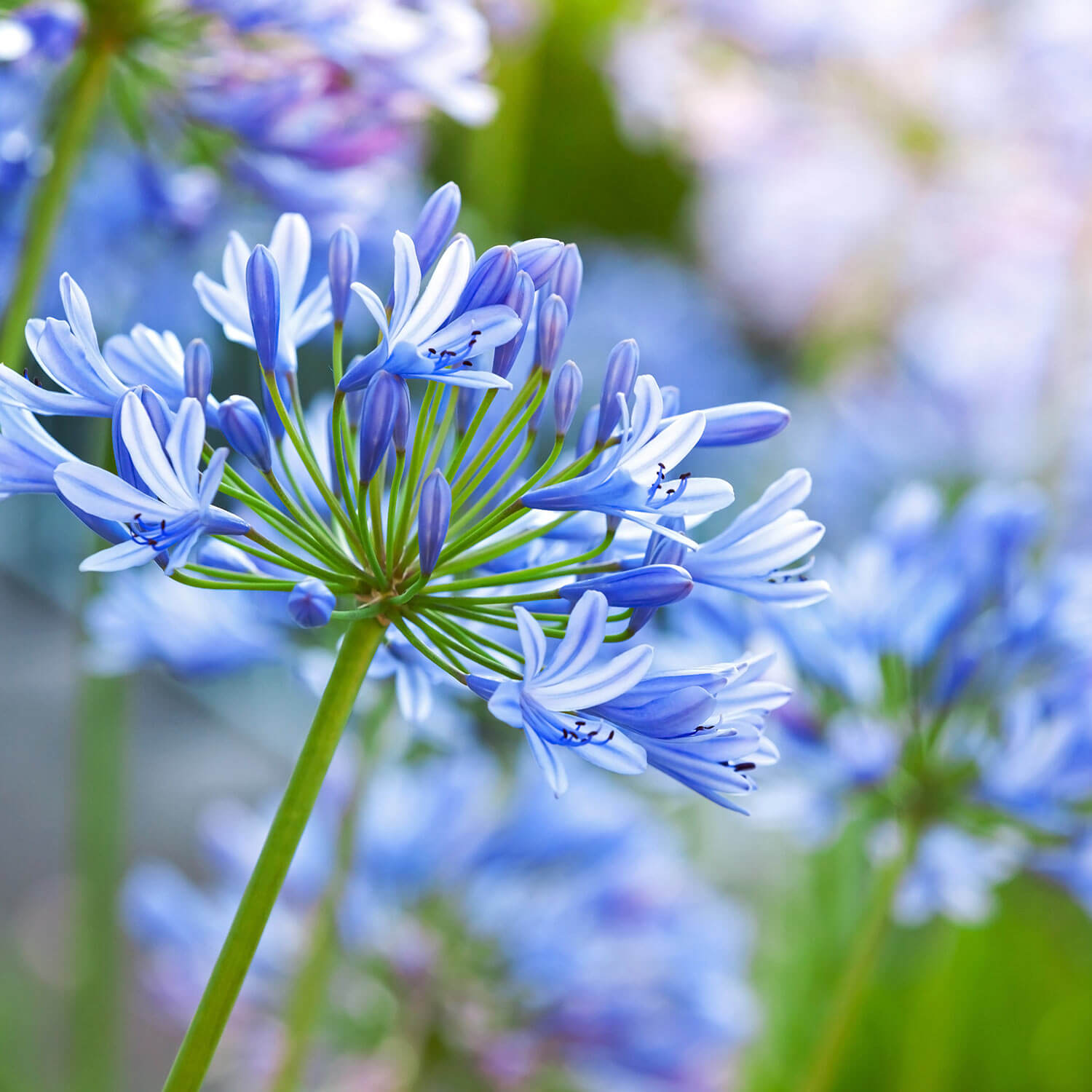Agapanthus Varieties: Picking the very best for Your Landscape
Agapanthus Varieties: Picking the very best for Your Landscape
Blog Article
Mastering the Art of Agapanthus Treatment: Vital Actions for Healthy And Balanced Growth and Dynamic Flowers
In the realm of cultivation, the growing of agapanthus stands as a gratifying endeavor for those who look for to support these classy flowering plants. With their striking blooms and graceful foliage, agapanthus has caught the interest of gardeners worldwide. Nonetheless, accomplishing optimum development and dynamic blossoms requires a nuanced method that encompasses numerous crucial steps. From selecting the ideal selection to understanding trimming methods, the journey towards growing thriving agapanthus plants is diverse and holds the vital to opening the full possibility of these herb gems.

Picking the Right Agapanthus Variety

When selecting the best Agapanthus variety for your yard, consider factors such as climate viability, blossom color, and growth practice. Agapanthus, frequently recognized as Lily of the Nile or African lily, can be found in a range of colors ranging from tones of blue and purple to white. Select a blossom shade that complements your existing yard scheme to produce an unified landscape. In addition, think about the climate in your area to guarantee the Agapanthus selection you select can thrive in your details conditions. Some varieties are extra forgiving of cool temperature levels, while others like warmer environments. Understanding the growth routine of different Agapanthus ranges is critical for appropriate positioning within your yard. Some selections have a clumping development habit, perfect for containers or boundaries, while others have a more dispersing nature, suitable for ground cover or mass plantings. By carefully assessing these aspects, you can pick the ideal Agapanthus range to enhance the beauty of your garden.
Suitable Planting Conditions
Thinking about the optimum environmental demands is vital for successful Agapanthus cultivation. Agapanthus plants are delicate to cool temperatures and must be protected from frost during winter season months.
To make sure healthy growth and lively blossoms, plant Agapanthus bulbs at a deepness of concerning 2-4 inches and space them 8-12 inches apart. Including raw material, such as compost, to the dirt can enhance drainage and fertility, advertising durable origin development. Mulching around the base of the plants helps preserve moisture and suppresses weed development. Routine watering is critical, especially during the expanding period, to keep the soil consistently moist but not saturated.
Watering and Fertilizing Tips
Keeping appropriate dampness degrees and offering crucial nutrients are crucial components in the treatment program for Agapanthus plants. When it comes to sprinkling Agapanthus, it is vital to strike an equilibrium. These plants choose continually wet dirt however are at risk to root rot if overwatered.
Fertilizing Agapanthus is essential for advertising healthy and balanced development and prolific blooms. Apply a well balanced fertilizer, such as a 10-10-10 formula, in the very early springtime as new growth emerges. Repeat this application every 6-8 weeks throughout the growing season. Avoid extreme fertilization, as it can cause lavish vegetation at the expense of blooms. Always follow the manufacturer's directions for correct dilution and application approaches. By complying with these watering and feeding tips, you can ensure your Agapanthus plants prosper and create lively, resilient flowers.
Trimming Methods for Agapanthus
Pruning Agapanthus plants at the ideal times and with proper methods is essential for preserving their health and advertising optimum growth and blooming. The excellent time to trim Agapanthus is in late wintertime or very early springtime prior to new development emerges.
Deadheading invested flowers can also redirect the plant's power right into producing more blooms rather than setting seeds. If you want to gather seeds for proliferation, leave some flowers to fully grown and completely dry on the plant.
Bear in mind to utilize tidy, sharp devices to make exact cuts and minimize the risk of introducing diseases. Agapanthus. Regular trimming will certainly aid maintain your Agapanthus looking cool and healthy and balanced while guaranteeing a plentiful screen of attractive flowers
Managing Common Bugs and Illness
After making sure correct pruning methods for Agapanthus, it is crucial to attend to typical pests and illness that can affect the health and wellness and vigor of these plants. One typical bug browse around here that influences Agapanthus is the Agapanthus gall midget.
One more usual problem is fungal leaf place, which presents as dark lesions on the fallen leaves. To protect against fungal illness, make certain good air blood circulation around the plants, stay clear of above watering, and eliminate any contaminated fallen leaves quickly. Additionally, Agapanthus plants great post to read can experience origin rot if they are planted in inadequately draining pipes dirt. To stop this, plant Agapanthus in well-draining dirt and prevent overwatering. By being cautious and taking punctual action against conditions and parasites, you can aid your Agapanthus plants prosper and create vibrant blooms.

Conclusion
To conclude, understanding the art of agapanthus treatment involves picking the best range, providing suitable planting conditions, proper watering and feeding, suitable pruning techniques, and dealing with common parasites and diseases. By adhering to these necessary steps, you can make certain healthy and balanced development and vibrant blossoms for your agapanthus plants. Keep in mind to regularly keep an eye on and maintain your plants to promote their total wellness and long life.
To make sure healthy and balanced development and vibrant blossoms, plant Agapanthus light bulbs at a deepness of regarding 2-4 inches and space them 8-12 inches apart. By following these watering and feeding pointers, you can guarantee your Agapanthus plants grow and create vivid, durable blossoms.
One common bug that influences Agapanthus is the Agapanthus gall midget. Furthermore, Agapanthus plants can experience from root rot if they are grown in inadequately draining pipes dirt. By following these vital steps, you can ensure healthy growth and visit this page dynamic blooms for your agapanthus plants.
Report this page